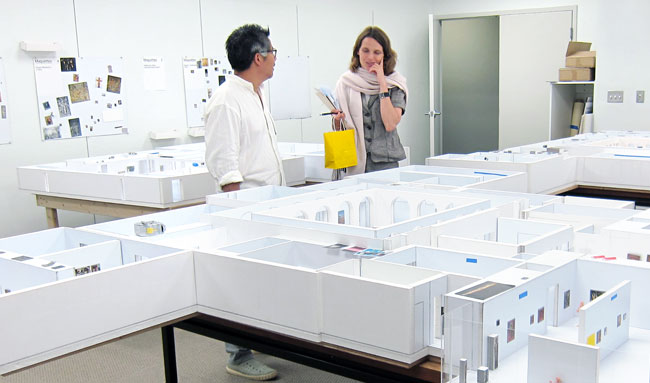To prepare the galleries for this fall’s opening of our renovated and expanded facility, the Harvard Art Museums have been working closely with wHY, a team of 40 creative designers with offices in Los Angeles, New York City, and Louisville. Led by Creative Director Kulapat Yantrasast, wHY has collaborated with the museums’ curators and senior leaders on the design for the inaugural installation of our permanent collections galleries, as well as on plans for how these spaces can be reconfigured or changed over time as works of art are rotated.
Four different workshops act together as one team at wHY: ideas (design research and strategy), buildings (architecture), grounds (landscape environments), and objects (products and material explorations). wHY’s designers have worked with a number of the nation’s leading museums, such as the Art Institute of Chicago and the Grand Rapids Art Museum, and are currently designing major projects for the Bibliotheca Alexandrina in Cairo, Egypt, and the Worcester Art Museum in Massachusetts. Wherever they go and no matter the project—museum, public park, or library—wHY provides its clients with highly tailored responsive design.
Kulapat points out how the Harvard Art Museums’ resources—the museums’ world-class collections and the backing of one of the world’s leading universities—make this project different from others. “What’s unique about the museums is the variety of their objects and the institution’s emphasis on close looking and critical thinking,” he said. This focus is seen clearly in the installation plans, which allow for sufficient space between objects to facilitate such close looking. “Each object has some aspect that allows scholars, teachers, and art lovers to study carefully for their intellectual pursuit and for their enjoyment.”
With wHY’s fine-tuned gallery design, the museums have developed a contemporary and vital environment for the display of art. This kind of thoughtful planning and consideration has gone into every square inch of the museums’ new facility, so that when we open our doors on November 16, we’re doing much more than turning a key—we’re opening up our collections in new and exciting ways to the campus and community that we serve.



